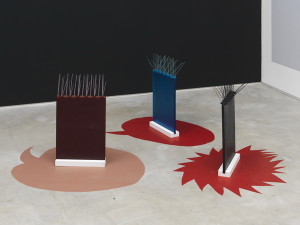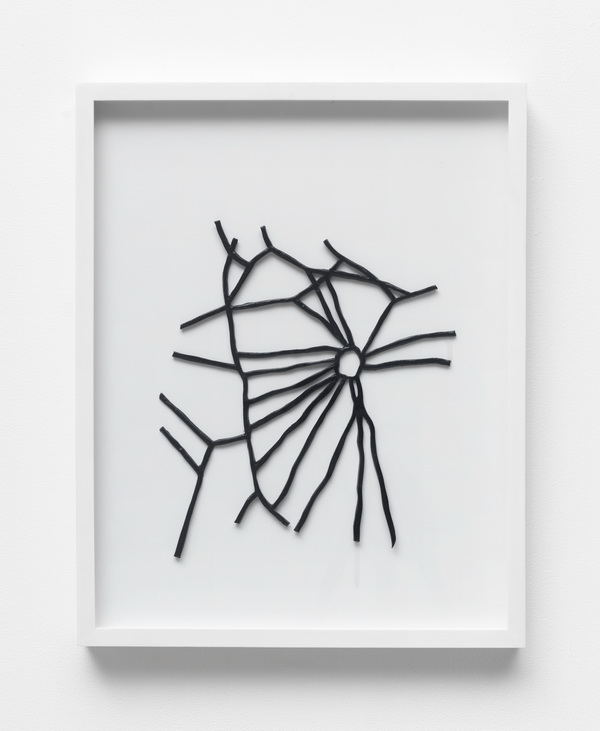The New York and Berlin-based artist and e-flux mainstay Julieta Aranda has long been concerned with the workings of the social arena through its medium of human interaction, and its reciprocal relationships with both the production of the self as subject, and the space within which these very subjects interact. Aranda’s practice has demonstrated not so much an aversion to producing material, as an attraction to evoking the immaterial nature and subject matter of social concepts whilst utilizing material(s) in realizing her creative intentions.

Julieta Aranda, 54H – SURVIVABILITY I had no idea of what I was supposed to want, but knew better than to admit it., 2016, ©Julieta Aranda, courtesy of James Fuentes Gallery, New York.
In Aranda’s current solo exhibition, “Swimming in Rivers of Glue (an exercise in counterintuitive empathy),” she narrows her conceptual and geographical scope to an investigation of how urban spaces have been affected by the proliferation of what is termed defensive, or hostile, architecture—a design scheme imposed and implemented by governments and corporations to control human behavior. In effect, the control of subjects according to privatized interests realizes the kind of space against which Aranda has been arguing throughout her work.
Although it consists entirely of new work produced in 2016, “Rivers of Glue” loosely echoes the composition and layout of Aranda’s 2014 installation “Stealing one’s own corpse (An alternative set of footholds for an ascent into the dark).” In fact, the video projection around which the rest of the exhibition arguably revolves is titled as a sequel to the aforementioned installation, with the addendum of Part 2—Swimming in rivers of glue—The perspective of perspective. The nearly 10-minute composite of video, images and text more or less takes up where its predecessor left off, expanding from the themes of space exploration and colonization. In it, insects tear apart and devour larger creatures; images displaying the diversity of life forms on Earth are intercut between depictions of animals, diseases, and deformities; texts relay propaganda for human exploration, colonization and domination; and anonymous interviewees discuss the most urgent, distressing issues of humanity. All of the content augments a sense of dread and anxiety about the human condition, which pervades the film throughout.
As if amplifying one of the core themes driving the film, the works surrounding the projection weave together and conjure an atmosphere of tension. Each formation of the “PLACEMENT” series scattered about the floor is named after and invokes an actual environment—Japan, London or Guangzhou,—while directly imitating some of the most common manifestations of hostile architecture, from fields of studs, cones and balls, to spikes spread over grounds. Employing a concept once utilized before, the large, unfinished crossword puzzle overlooking the gallery floor, PRODUCED, provides the semiotic, discursive base for the tense atmosphere.
One of the more notable works in the gallery space, EXISTENCE, consists of the deflated artificial silhouette of a human figure draped over a bench shaped so as to discourage sleeping, seeming to question the presence of a human being, or humanity. Indeed, one of the primary concerns of the exhibition may have to do with the experience of space, when, in seeming violation of its very nature, it is employed as a means of subjugation and control.


